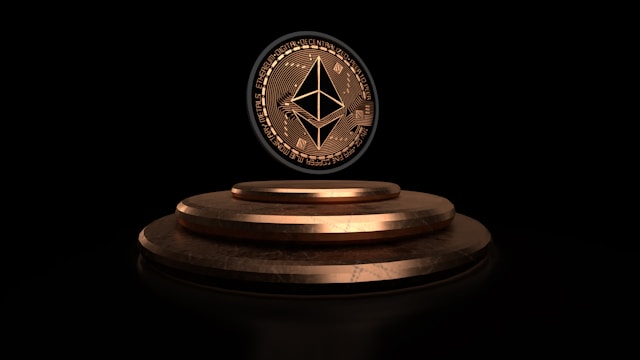
Ethereum and Tron are two of the biggest proof-of-stake (PoS) networks in the crypto space. That means they share a lot in common, including the use of a PoS consensus mechanism, the need for staking etc.
You may already know all of that, but what about their differences? What makes the two networks different from each other? In this guide, we discuss these two blockchain networks and highlight the key differences between them.
What is Ethereum?
Anyone who has been in the crypto space for some time must have heard of Ethereum, but don’t worry if you haven’t, because we’ll tell you all about it. Ethereum is the second largest crypto network after Bitcoin.
The blockchain is known for its support for other crypto projects. It is a platform for building smart contracts and decentralized applications. Many projects you may know were built on Ethereum and still run on the same network.
As the pioneer network for building decentralized applications, Ethereum is by far the most popular and strongest network among the PoS networks, but that may be about to change. This is because Ethereum has some issues which are part of its design.
For example, it has low scalability. This was an issue for many years, so the team decided to migrate from a proof-of-work (PoW) to a PoS consensus in a bid to improve performance. Sadly, the issue has not been resolved.
As a result, Ethereum fees can be outrageous when the network is congested, and this happens quite often. There are times when the transaction fees on the network are many times bigger than the amount a user intends to send.
The native token for the network, ETH or ether is used to pay for these transaction fees. It is also used as the staking token to secure the network, as well as the governance token for the entire network.
ETH is also a viable investment asset and it can perform better with improvements on the network but for now is fiercely contested by other networks.
What is Tron (TRX)?
Tron is one of the leading PoS networks. Interestingly, it started as a project built on the Ethereum network and only became an independent blockchain years later. The network is currently used for creating decentralized applications, just like Ethereum.
The network’s founder Justin Sun has repeatedly said that the network’s primary goal is to decentralize the internet. The network has been competing with Ethereum ever since it moved to its own blockchain, and has become more popular for a few reasons.
First, the network is more scalable than Ethereum. It can process a much larger number of transactions per second than Ethereum, and it is also much cheaper to use for transactions. The Tron network is one of the most popular for transactions with stablecoins and other crypto assets because of the low fees.
The native token for the network, TRX is used to pay for transaction fees and is also used for staking to secure the network as well as being used as a reward token for the network. The token also serves as a governance token for the network, empowering holders to vote on future developments on the project.
Which Network is better?
Ethereum has established itself as the leading network for decentralized applications. However with lapses such as low scalability and high fees, it is at a disadvantage currently, and only an improvement in these areas can give it an edge going forward.
Developers prefer faster and cheaper blockchain networks, so they may naturally go for networks like Tron instead of Ethereum, though Ethereum is much more secure and stable.
In terms of buying the tokens as investment assets, ETH remains a better investment than TRX because of its increasing popularity among investors. The token also recently got approval for ETFs, so that makes it a much better investment for the future.


